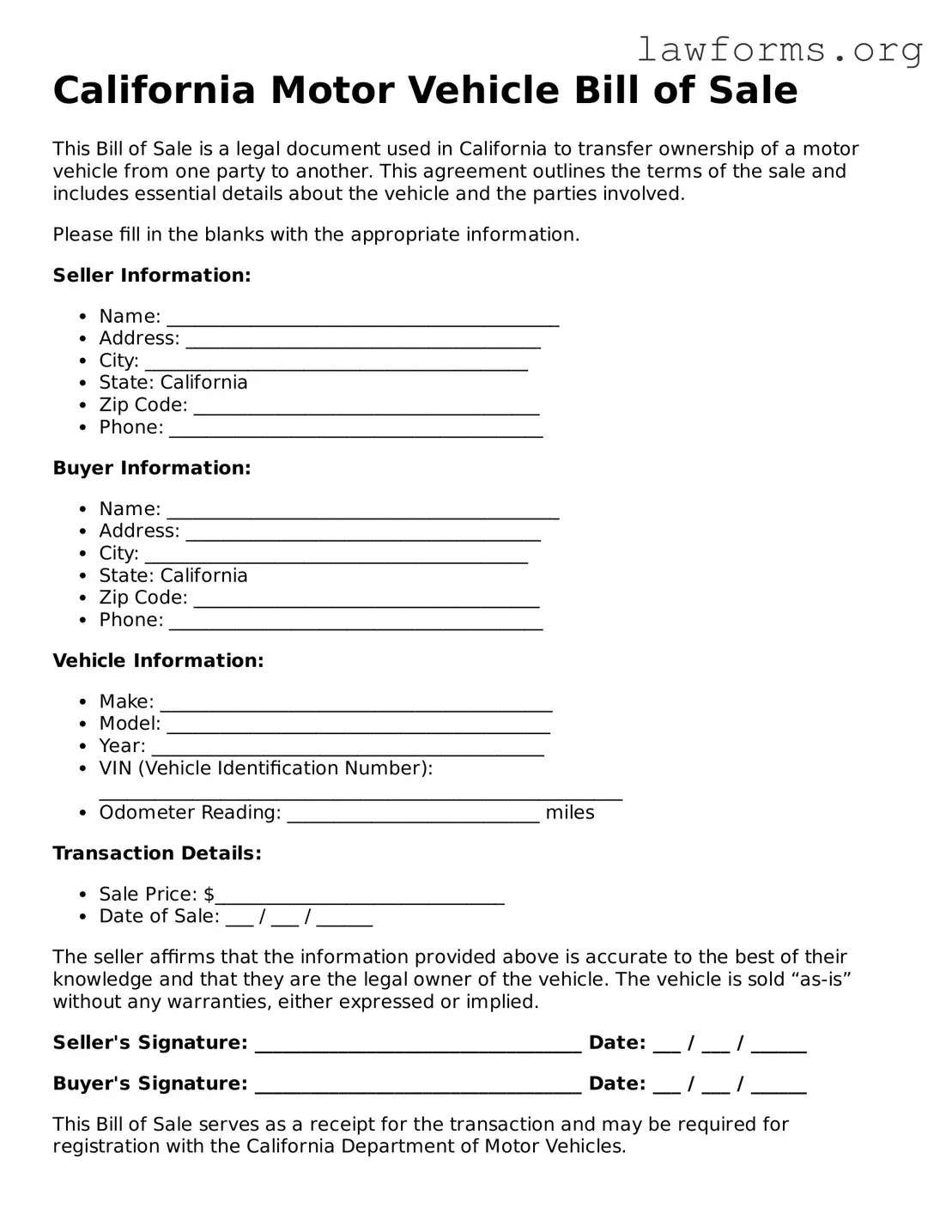California Motor Vehicle Bill of Sale
This Bill of Sale is a legal document used in California to transfer ownership of a motor vehicle from one party to another. This agreement outlines the terms of the sale and includes essential details about the vehicle and the parties involved.
Please fill in the blanks with the appropriate information.
Seller Information:
- Name: __________________________________________
- Address: ______________________________________
- City: _________________________________________
- State: California
- Zip Code: _____________________________________
- Phone: ________________________________________
Buyer Information:
- Name: __________________________________________
- Address: ______________________________________
- City: _________________________________________
- State: California
- Zip Code: _____________________________________
- Phone: ________________________________________
Vehicle Information:
- Make: __________________________________________
- Model: _________________________________________
- Year: __________________________________________
- VIN (Vehicle Identification Number): ________________________________________________________
- Odometer Reading: ___________________________ miles
Transaction Details:
- Sale Price: $_______________________________
- Date of Sale: ___ / ___ / ______
The seller affirms that the information provided above is accurate to the best of their knowledge and that they are the legal owner of the vehicle. The vehicle is sold “as-is” without any warranties, either expressed or implied.
Seller's Signature: ___________________________________ Date: ___ / ___ / ______
Buyer's Signature: ___________________________________ Date: ___ / ___ / ______
This Bill of Sale serves as a receipt for the transaction and may be required for registration with the California Department of Motor Vehicles.
